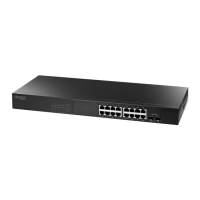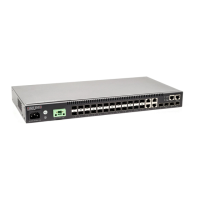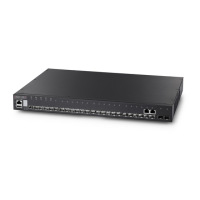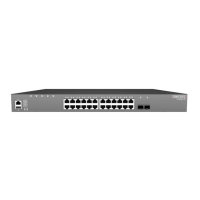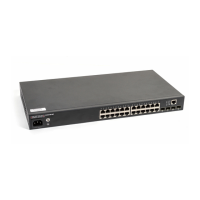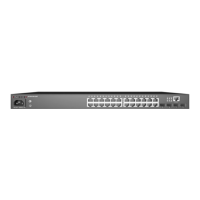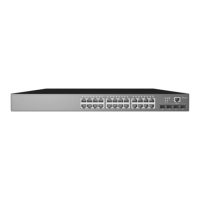– 121 –
23 MANAGEMENT TOOLS
This chapter includes the following sections for management tools:
◆ “HTTP Upgrade” on page 121
◆ “Restoring Factory Defaults” on page 122
◆ “Resetting the Switch” on page 123
HTTP UPGRADE
Use the HTTP Upgrade page to upgrade the switch’s system firmware by
specifying a new software file. You can also use the HTTP Upgrade page to
save the current configuration to a file on your computer, or to restore
previously saved configuration settings to the switch.
PARAMETERS
The following parameters are displayed on the HTTP Upgrade page:
◆ HTTP Configuration Backup — Click the Backup button to save the
current configuration settings to a file on the local web management
station.
◆ HTTP Configuration Restore — Restores previously saved
configuration settings to the switch from a file on the local web
management station. Use the Browse button to locate the configuration
file, then click Restore.
◆ HTTP Firmware Upgrade — Upgrades the switch software from a file
on the local web management station. Use the Browse button to locate
the software file, then click Upgrade.
WEB INTERFACE
To upgrade switch software:
1. Click Tools, HTTP Upgrade.
2. Click the Browse button, and select the firmware file.
3. Click the Upgrade button to upgrade the switch’s firmware.
After the software file is uploaded, the switch prompts for a reboot.
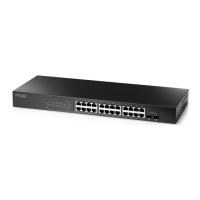
